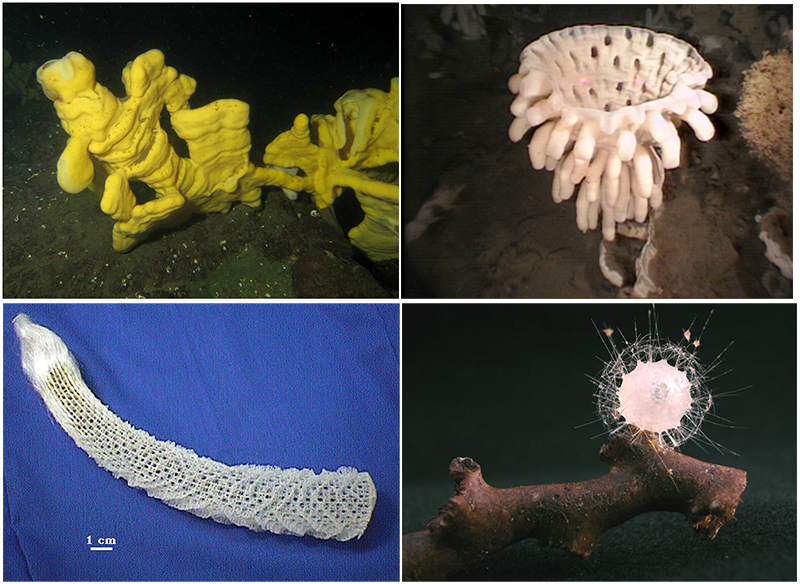Invertebrates do not have backbones and make up 95% of the animals
living on earth (us vertebrates are actually way way way in the
minority).
We have covered molluscs, crustaceans, and
echinoderms in larger units, but there are lots of other invertebrate
phyla including three types of worms, sponges, and cnidarians.
Cnidarians
include coral, jellies, and sea anemones and will be covered in Unit
10. They have radial symmetry and stinging tentacles surrounding their
mouth.
Sponges in phyla Porifera
have asymmetry because of their irregular shapes. Water flows in
through many small pores and out large centralized openings called
osculum. This is how sponges get their food and how they get rid of
waste. Sponges have two types of structural support - spicules that are
spiny or pointy and made of calcium carbonate and springy spongin.
Sponges we use around the house used to be made of sponges harvested
from the ocean that were pounded to remove the spicules. Now, plastic
sponges are commonly used.
There are three types of worms - Flatworms (Platyhelminthes), R0undworms (Nematodes), and Segmented Worms (Annelids).
Flatworms (Platy-hel- minthes) are
flat and ribbon like, have bilateral symmetry and include things like
tapeworms, planarians, flukes, and brightly colored marine flatworms.
Marine flatworms have similar adaptations to nudibranchs (molluscs), but
are flat and have no tufts. They are simple animals and are often
parasites.
Roundworms (Nematodes) are ubiquitous
and found commonly worldwide in every biome... but they are poorly
understood because they are very very small. Less than 5cm. They have
radial symmetry and often are parasites. Roundworms have scary looking
mouths with teeth for attaching - often used in scary movies.
Segmented Worms (Annelids) include
earth-worms, leeches, bristle-worms, and christmas tree worms. They are
more advanced than the other worms with segments and body organs. They
have radial symmetry and tunnel through their food.
For those of you studying invertebrates, you can use these matching cards to help!
Polar Vs NonPolar Covalent Bonds
-
Anyone who has ever had to share something with someone else knows that
sometimes isn't exactly even. Covalent molecules or bonds are no different.
If a ...
7 years ago







1 comment:
this website is well-made and very knowlegable. more scientificaly accurate than BBC or Discovery Channal or Animal Planet
Post a Comment